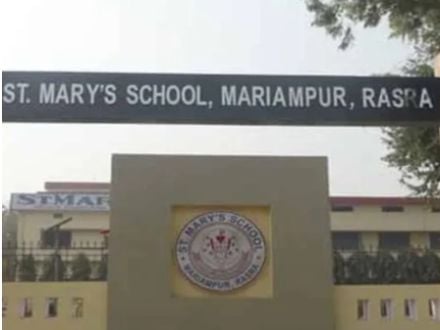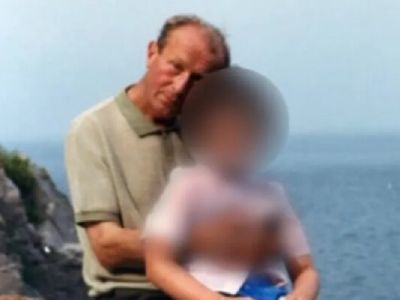Bhadrapad Krushna Dashami, Kaliyug Varsha 5111
By Nicole Winfield, Associated Press Writer
Verona (Italy): It happened night after night, the deaf man said, sometimes in the priest’s bedroom, sometimes in the bathroom, even in the confessional.
When he was a young boy at a Catholic-run institute for the deaf, Alessandro Vantini said, priests sodomized him so relentlessly he came to feel "as if I were dead." This year, he and dozens of other former students did something highly unusual for Italy: They went public with claims they were forced to perform sex acts with priests.
For decades, a culture of silence has surrounded priest abuse in Italy, where surveys show the church is considered one of the country’s most respected institutions. Now, in the Vatican’s backyard, a movement to air and root out abusive priests is slowly and fitfully taking hold.
A yearlong Associated Press tally has documented 73 cases with allegations of sexual abuse by priests against minors over the past decade in Italy, with more than 235 victims. The tally was compiled from local media reports, linked to by Web sites of victims groups and blogs. Almost all the cases have come out in the seven years since the scandal about Roman Catholic priest abuse broke in the United States.
The numbers in Italy are still a mere trickle compared to the hundreds of cases in the court systems of the United States and Ireland. And according to the AP tally, the Italian church has so far had to pay only a few hundred thousand euros (dollars) in civil damages to the victims, compared to $2.6 billion in abuse-related costs for the American diocese or euro1.1 billion ($1.5 billion) due to victims in Ireland.
However, the numbers still stand out in a country where reports of clerical sex abuse were virtually unknown a decade ago. They point to an increasing willingness among the Italian public and — slowly — within theVatican itself to look squarely at a tragedy where the reported cases may only just be the tip of the iceberg. The Italian church will not release the numbers of cases reported or of court settlements.
The implications of priest abuse loom large in Italy: with its 50,850 priests in a nation of 60 million, Italy counts more priests than all of South America or Africa. In the United States — where the Vatican counts 44,700 priests in a nation of 300 million — more than 4,000 Catholic clergy have been accused of molesting minors since 1950.
The Italian cases follow much the same pattern as the U.S. and Irish scandals: Italian prelates often preyed on poor, physically or mentally disabled, or drug-addicted youths entrusted to their care. The deaf students’ speech impairments, for example, made the priests’ admonition "never to tell" all the more easy to enforce.
In this predominantly Roman Catholic country, the church enjoys such an exalted status that the pope’s pronouncements frequently top the evening news, without any critical commentary. Even those with anti-clerical views acknowledge the important role the church plays in education, social services and caring for the poor.
As a result, few dare to criticize it, including the mainstream independent and state-run media. In addition, there’s a certain prudishness in small-town Italy, where one just doesn’t speak about sex, much less sex between a priest and a child.
"It’s a taboo on top of a taboo," said Jacqueline Monica Magi, who prosecuted several pedophilia cases in Italy before becoming a judge. "This is the provincialism of Italy."
Breaking the conspiracy of silence, 67 former students from Verona’s Antonio Provolo institute for the deaf signed a statement alleging that sexual abuse, pedophilia and corporal punishment occurred at the school from the 1950s to the 1980s at the hands of priests and brothers of the Congregation for the Company of Mary.
While not all acknowledged being victims themselves, 14 of the 67 wrote sworn statements and videotaped testimony, detailing the abuse they say they suffered, some for years, at the school’s two campuses in Verona, the city of Romeo and Juliet. They named 24 priests, lay religious men and religious brothers.
Vantini said he, too, was silent for years.
"How could I tell my papa that a priest had sex with me?" Vantini, 59, told the AP one afternoon, recounting through a sign-language interpreter the abuse he said he endured. "You couldn’t tell your parents because the priests would beat you."
Vantini named two priests and two lay brothers — three of whom are still alive — but asked that their names not be printed for fear of legal action. He spoke with the nervousness and agitation he says has accompanied him all of his life from being raped as a child by a priest.
"I suffered from depression until I was 30," said Vantini, who attended the school from age 6 to 19. "My wife said it was good that I spoke out because it lifted this weight from my chest."
Vantini’s one-time schoolmate, Gianni Bisoli, 60, named the same men in his written declaration and in an interview, as well as 12 other priests and brothers from the Congregation, accusing them of sodomizing him, forcing him to have oral sex and to masturbate them.
In his declaration, Bisoli also accused Verona’s late bishop, Monsignor Giuseppe Carraro — who is being considered for beatification — of molesting him on five separate occasions while he was a student at Provolo, which he attended from age 9 to 15.
A diocesan probe cleared Carraro of sex abuse. But the investigation interviewed none of the alleged victims, limiting testimony to surviving members of the Congregation, other school personnel and their affiliates, and documentation from the Congregation and Verona diocese.
The late bishop’s beatification process was suspended pending the investigation, but is now going ahead to the Vatican’s saint-making office.
Five decades later, Bisoli still recalls the route he said he took from the institute, located on a quiet street named for the congregation’s founder, Don Antonio Provolo, along the serpentine Adige river to the bishop’s residence tucked behind Verona’s Piazza del Duomo.
Bisoli, who became deaf at age eight, said he was accompanied by one of his abusers and walked past the red brick Castelvecchio, an imposing 14th-century citadel, then along the main Corso Cavour thoroughfare or the more out-of-the-way pedestrian shopping street Via Mazzini.
"They brought me inside the curia (the diocese headquarters)," Bisoli recalled in an interview. "There was a servant who opened the door, then someone brought me inside. It was dark."
Bishop Carraro appeared, he recalled. "The bishop started to touch me, grope me," he said, running his hands up and down his body, pulling at his shirt and shorts to demonstrate. "I pulled away. But he continued to touch me for 15, 20 minutes. I didn’t know what to do."
On a subsequent occasion, Bisoli says, the bishop tried to sodomize him with a banana. Another time, they were on the sofa and he sodomized him with his finger, offering him candy to appease him, Bisoli said.
Once, Bisoli said, the bishop offered him some gold crosses that had caught Bisoli’s eye.
"I said ‘at least give me 10,000-20,000 lire so I can buy a Coca-Cola or an ice cream,’" Bisoli recalled.
The current bishop of Verona, Monsignor Giuseppe Zenti, initially accused the former students of fabricating their claims in talking in January to L’Espresso, a left-leaning newsweekly. Zenti called the accusations "lies" and a stunt that was part of a long-standing real estate dispute between the Congregation and the deaf students’ association, to which the alleged victims belong.
But when one of the accused lay religious men admitted to sexual relations with students, Zenti ordered an internal investigation into the Congregation. The results found that some abuse occurred, albeit a fraction of what has been alleged.
According to the diocese probe, there were episodes of physical violence against two unnamed students between 1958 and 1965. From 1965 to 1967, two would-be priests with "sexual disorders" were kicked out; while between 1965 and 1990 a religious brother had sexual relations with an undetermined number of students, the investigation found. In all cases the accused were removed.
"There could have been some episodes, some bad apples are possible," Carlo de’ Gresti, spokesman for the Provolo institute said in an interview at the school’s Chievo campus, where a lay staff now runs a technical school for poor teens. "It happens, even in families. That there could have been 26, 27, 25 pedophiles? There is no objective corroboration from anyone who isn’t inside the (students’) association."
Advocates, however, says the diocese’s investigation was fatally flawed because it didn’t interview the alleged victims and only people with links to the school who may have something to hide.
"If they had wanted to shed full light on it, they wouldn’t have only heard from priests and lay brothers, but from the deaf as well," said Marco Lodi Rizzini, a spokesman for the victims.
The investigation has been forwarded to the Vatican, said the Rev. Bruno Fasani, spokesman for the diocese. He claimed former students had been manipulated into denouncing innocent priests and accused some of harboring a long-standing animosity to the church.
Zenti, for his part, asked forgiveness from the victims.
"The feeling that prevails is above all one of profound solidarity with the victims of abuse," Zenti said in a May statement. "To them and their families, a humble request of forgiveness is made."
Among the cases the AP tallied, there were charges of inducing boys into prostitution, participation in satanic rituals, and one notorious case in which the church itself determined that an elderly Florentine priest was responsible for "sexual abuse, false mysticism and domination of consciences."
Where there were sentences, they ran from a two-year suspended sentence to eight years in jail, although with Italy’s notoriously lengthy appeals process it’s unclear how many have been carried out. Where civil damages were awarded, which has been rare, the amounts ranged from about euro15,000 per victim to euro150,000 (about $22,000 to $220,000 at today’s exchange rates).
The cases in the AP survey involve civil or criminal cases and investigations. For that reason, the Verona figures were omitted, since no criminal or civil action is pending because the statute of limitations has expired.
In 2002, when the abuse scandal was erupting in the United States, the No. 2 official in the Italian Bishops’ Conference, Monsignor Giuseppe Betori, was quoted as saying clerical sex abuse was so limited in Italy that the conference leadership hadn’t even discussed the matter.
But Italian prelates and the Vatican now seem to be taking the problem far more seriously. Monsignor Charles Scicluna, the Vatican prosecutor in the Congregation for the Doctrine of the Faith — which handles cases of priestly sex abuse — acknowledged that public awareness of the problem in Italy had increased as a result of the "tsunami" of cases that came to light in the United States.
"There is a change of mentality, and we find that to be very positive," he told the AP.
In a shift for the Vatican, Scicluna acknowledged that priestly sex abuse was an age-old problem that needed to be rooted out.
"I don’t think it’s a question of happening. It has always happened. It’s important that people talk about it, because otherwise we cannot bring the healing which the church can offer to people who need it — both the victims and perpetrators."
Source: Yahoo
Also See
 |
Dharma Jagruti SabhasDhama Jagruti Sabhas is creating mass awareness among Hindus about various problems affecting Hindu Dharma. |
 |
Save temples from Anti-Hindus
Temples are the centres of Hindu Dharma. Anti Hindu forces like Muslims, Congress, Christians has constantly targetted them. HJS is fighting against these forces. |




